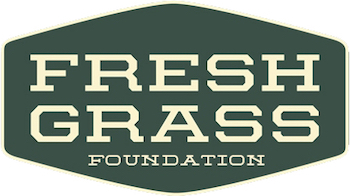Album Review: Morgan Toney, ‘First Flight’

Canadian fiddler, singer, and songwriter Morgan Toney has been creating quite a buzz in the Maritime Provinces. It’s no wonder; he’s heir to centuries of tradition as a young Mi’kmaq singer, and he’s one of the first Mi’kmaq artists to fuse the old songs with the Cape Breton fiddle tradition. At some places in the world, one tradition seems to run the scene, riding over other surrounding traditions and drawing in artists from multiple backgrounds and ethnicities. In Louisiana, for example, the French Acadians scooped up French Creoles, Native Americans, and Germans, taking ideas and instruments from each musical tradition to build Cajun music.
In Cape Breton Island in Nova Scotia, the Scottish settlers of the island are still the dominant tradition, having drawn in surrounding Francophones and First Nations traditions. That means that today in Cape Breton, and in the recent past, Mi’kmaq fiddling has largely been based on the island’s Scottish fiddling. The great Mi’kmaq fiddler Lee Cremo played the Scottish tunes that everybody loved and, according to Toney, was much loved at dances as well because he could bring some country swing into the music. All this to say that perhaps what Canada expected from Toney was another Cape Breton Scottish fiddler, but from a Mi’kmaq background.
But that’s not what they got! Instead, Toney’s been a ferociously experimental artist, focused on highlighting the Mi’kmaq language and songs, an artist powerfully adept at bridging worlds.
Canadian Indigenous label Ishkode Records is releasing Toney’s debut album, First Flight, on March 25, with the first single, “Ko’jua,” out this week. (The album was first released independently last May.) The song’s a great example of how Toney has been adapting traditional songs. I talked to him on the phone from his Cape Breton home about this song, and he’s a passionate believer in the importance of song to teach and maintain Indigenous languages.
The title Ko’jua is maybe more of a song family than a song; in fact, Toney said it was almost like its own genre of music. “There are a lot of variations on the song,” he explained. “It’s very broad and there’s maybe several ways to sing it, but when you sing a Ko’jua song, you’re singing the Ko’jua.” According to Toney, some versions of the Ko’jua are almost 500 years old, dating back to the early settlement of North America and maybe beyond. But these versions are nearly unintelligible to modern Mi’kmaq speakers, a sign of how much the Mi’kmaq language has developed. Anglophones tend to think of Indigenous languages as static, but examples like this show how vital and alive Indigenous languages are. The Ko’jua is often paired with the Jikamaqn, a uniquely Mi’kmaq musical instrument. Toney’s been reviving this instrument too; it’s a kind of rattle made from splitting soft wood like white ash or birch bark.
Toney’s debut album is full of creative fire, a testament to a young artist searching for his voice and overflowing with ideas. He features multiple traditional songs that he learned directly from elders or from others in the community, and he features Cape Breton fiddling as well, even including a performance from the legendary Cape Breton fiddler Ashley MacIsaac. So far, Toney’s been embraced by the Anglophone fiddling world of Cape Breton and Canada, even though the Mi’kmaq have been a frequent target of surrounding Anglophone communities in the form of protests and direct attacks on Mi’kmaq fisheries. Toney aims to stand up against this kind of discrimination, and some of the songs on his album highlight the mistreatment of First Nations peoples by the Canadian government. Toney himself had relatives sent to residential schools in order to destroy their language and culture, and the poignant song “The Colour Red” was written by Toney and his musical partner Keith Mullins to call attention to the scourge of missing and murdered Indigenous women in the country (both issues exist in the United States as well).
When talking about how he learned the music, Toney brings up the Mi’kmaq practice of the talking circle. The circle is open to all, but the person in the circle who holds the feather is given as much time as needed to say what he or she has to say, to bring up a grievance, or to sing a song or tell a story. Morgan Toney’s holding the feather now, and he’s got some beautiful songs to share.
###
“Ko’jua” is available HERE.
Resources
Follow at:
Instagram – @morgantoneymusic
Facebook – @morgantoneymusic
2022 Tour Dates:
Sept 9 – King’s Theatre – Annapolis, NS




